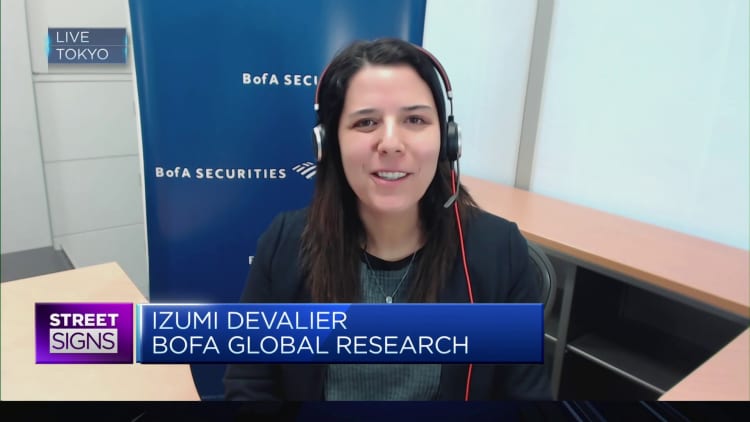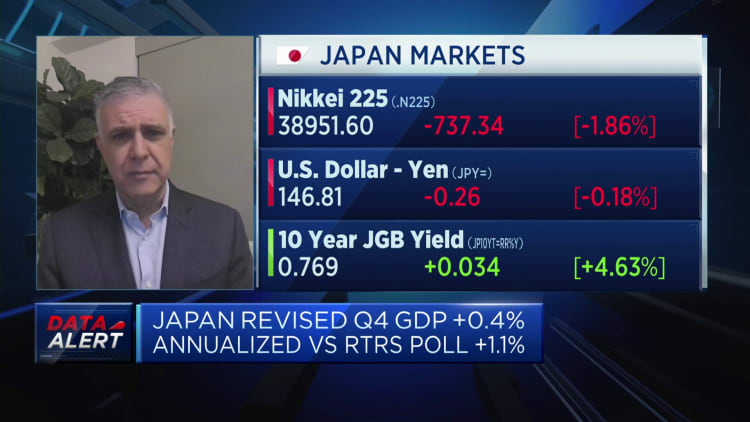Shoppers will likely see produce prices increase in the coming days due to President Donald Trump‘s tariffs on Mexican imports, Target CEO Brian Cornell said Tuesday.
The Trump administration’s 25% levies on goods from Mexico and Canada, along with an additional 10% duty on Chinese imports, took effect Tuesday.
Cornell said Target relies heavily on Mexican produce during the winter months, and the tariffs could force the company to raise prices on fruits and vegetables as soon as this week.
“Those are categories where we’ll try to protect pricing, but the consumer will likely see price increases over the next couple of days,” he told CNBC in an interview after Target released its fiscal fourth-quarter earnings.
“If there’s a 25% tariff, those prices will go up,” Cornell added.
Cornell said prices could rise for produce like strawberries, avocados and bananas.
During an investor day later that morning, Chief Commercial Officer Rick Gomez said it was too early to provide more specifics on the products and categories that will see price increases because “teams are working through it in real time” and the company has to look at pricing holistically.
“I’ll give you an example. We have $3 Christmas ornaments. We don’t want to have $3.60 Christmas ornaments. We want to keep them at $3. That means we have to think about margin elsewhere. So maybe we’ll take pricing up a little bit on stockings to cover where we are in Christmas ornaments,” said Gomez.
Another example he cited was Target’s “$5 tees.” The company wants to continue charging $5 flat for T-shirts. So while it may leave that price unchanged, it has more flexibility to hike prices for other products, such as dresses.
“So maybe we’ll look at dresses a little bit differently,” said Gomez. “So it’s actually not as simple as just like flowing through cost. We have to think about this from a consumer perspective and make sure that our pricing architecture makes sense and puts us in a place where we are competitive and we have affordable options.”
Target Corp. CEO, Brian Cornell speaks during an interview on the floor of the New York Stock Exchange November 28, 2014.
Brendan Mcdermid | Reuters
While inflation has eased in recent months, price increases have not moderated as much as the Federal Reserve has hoped. High costs for food and housing have continued to stretch consumer budgets, and Trump’s tariffs have raised fears that households will face even higher expenses. The president and his advisors have contended the duties will not raise prices for consumers.
When asked if he had spoken to Trump directly about the impact tariffs will have on prices, Cornell told CNBC he has “not had that conversation” with the president and instead has relied on the retail industry’s lobbying arm to speak on Target’s behalf.
“We’ve certainly been very active in Washington making sure that we provide our point of view, and we rely on [the National Retail Federation] and the industry to provide our perspective to a broad number of members of the administration,” said Cornell. “So we worked very closely with [the NRF and the Retail Industry Leaders Association] to make sure that collectively, our voice is being heard and we can share some of our insights and potential implications.”
When asked about China, Cornell downplayed concerns about how the cumulative 20% duties on goods from the region will affect shoppers. Cornell said Target has reduced its reliance on China to about 30% of imports from more than 60%. It’s on pace to get that number down to below 25% by the end of the next year, added Gomez.
The company has been able to reduce its reliance on China by turning to emerging manufacturing markets in the Western Hemisphere. Currently, only 17% of Target’s apparel — a key high-margin category for the company — is manufactured in China after production was shifted to countries like Guatemala and Honduras, said Gomez. That shift in supply chain is key to getting products to customers faster and also doesn’t come with the same raw material concerns associating with sourcing cotton in China.
Cornell’s comments come after Target posted fiscal fourth-quarter earnings and revenue that topped Wall Street’s expectations but cast a pall over the current quarter. The company said it’s bracing for a weak current quarter in part because of how tariff concerns are impacting shopping, along with sliding consumer confidence, which dropped in February to its lowest level since 2021.
Target’s guidance is the latest warning sign about the health of the economy, as it joined other retailers like Walmart, E.l.f. Beauty and Home Depot in giving weaker-than-expected first-quarter or full-year guidance.












